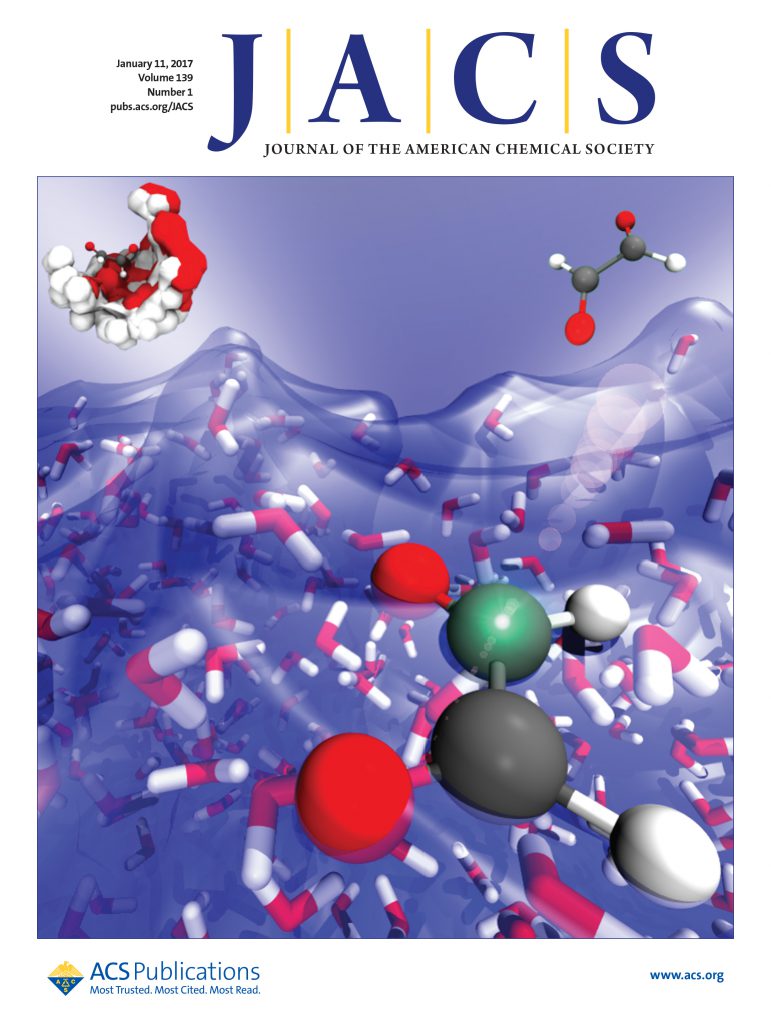Exploring the Balance between Faradaic and Non-Faradaic Processes in Organic Chemical Reactions at Plasma-Liquid Interfaces
IF 14.4
1区 化学
Q1 CHEMISTRY, MULTIDISCIPLINARY
引用次数: 0
Abstract
Electrochemistry can enable sustainable chemical manufacturing but is limited by the reactions possible with conventional metal electrodes. Plasma electrochemistry, which replaces a conventional solid electrode with plasma in electrochemical cells, opens new avenues for chemical synthesis by combining Faradaic and non-Faradaic processes at the plasma-liquid interface. To understand how plasma electrochemistry differs from conventional electrochemistry, we investigated plasma reactions with acrylonitrile, an industrially relevant molecule used as the precursor in the well-characterized electrosynthesis of adiponitrile. We demonstrate that non-Faradaic processes dominate plasma-driven chemistry through systematic variation of plasma polarity, current, and reactant concentration, combined with comprehensive quantitative analysis of solid, liquid, and gas products. Most notably, we observed no adiponitrile formation (the desired electrochemical product), while total product yields exceeded the theoretical charge-transfer maximum by up to 32-fold. Substantial polyacrylonitrile formation occurred under all conditions, a product not typically seen in conventional electrochemistry. The plasma anode produced consistently higher yields than the plasma cathode, generating hydrogen and propionitrile at 21 and 2 times the charge-transfer maximum, respectively. Electron scavenger experiments confirmed these transformations occurred primarily through non-Faradaic processes rather than charge transfer. These results demonstrate that plasma electrochemistry with acrylonitrile is primarily driven by non-Faradaic processes at plasma-electrolyte interfaces, providing fundamental insights for harnessing these interactions in chemical synthesis.

电化学可以实现可持续的化学制造,但受到传统金属电极可能发生的反应的限制。等离子体电化学在电化学电池中用等离子体取代了传统的固体电极,通过在等离子体-液体界面结合法拉第和非法拉第过程,为化学合成开辟了新途径。为了了解等离子体电化学与传统电化学的不同之处,我们研究了等离子体与丙烯腈的反应,丙烯腈是一种与工业相关的分子,在特性良好的己二腈电合成中用作前体。我们通过系统地改变等离子体极性、电流和反应物浓度,并结合对固体、液体和气体产物的全面定量分析,证明非法拉第过程在等离子体驱动的化学反应中占主导地位。最值得注意的是,我们没有观察到己二腈的形成(理想的电化学产物),而总产物产量超出理论电荷转移最大值达 32 倍。在所有条件下都形成了大量的聚丙烯腈,这在传统电化学中是不常见的。等离子体阳极的产量一直高于等离子体阴极,产生的氢气和丙腈分别是电荷转移最大值的 21 倍和 2 倍。电子清除剂实验证实,这些转化主要是通过非法拉第过程而非电荷转移发生的。这些结果表明,丙烯腈的等离子体电化学主要由等离子体-电解质界面上的非法拉第过程驱动,为在化学合成中利用这些相互作用提供了基本见解。
本文章由计算机程序翻译,如有差异,请以英文原文为准。
求助全文
约1分钟内获得全文
求助全文
来源期刊
CiteScore
24.40
自引率
6.00%
发文量
2398
审稿时长
1.6 months
期刊介绍:
The flagship journal of the American Chemical Society, known as the Journal of the American Chemical Society (JACS), has been a prestigious publication since its establishment in 1879. It holds a preeminent position in the field of chemistry and related interdisciplinary sciences. JACS is committed to disseminating cutting-edge research papers, covering a wide range of topics, and encompasses approximately 19,000 pages of Articles, Communications, and Perspectives annually. With a weekly publication frequency, JACS plays a vital role in advancing the field of chemistry by providing essential research.

 求助内容:
求助内容: 应助结果提醒方式:
应助结果提醒方式:


